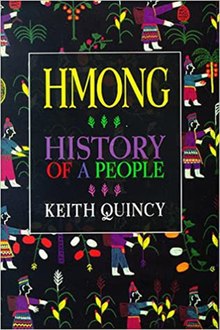
The Hmong people are an indigenous group in East Asia and Southeast Asia. In China, the Hmong people are classified as a sub-group of the Miao people. The modern Hmong reside mainly in Southwestern China and Mainland Southeast Asian countries such as Vietnam, Laos, Thailand, and Myanmar. There are also diaspora communities in the United States, Australia, and South America.
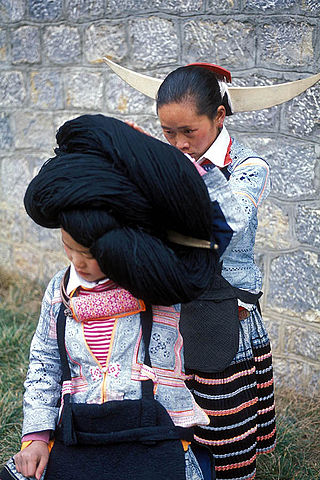
The Miao are a group of linguistically related peoples living in Southern China and Mainland Southeast Asia, who are recognized by the government of China as one of the 56 official ethnic groups. The Miao live primarily in the mountains of southern China. Their homeland encompasses the provinces of Guizhou, Yunnan, Sichuan, Hubei, Hunan, Guangxi, Guangdong, and Hainan. Some sub-groups of the Miao, most notably the Hmong people, have migrated out of China into Southeast Asia. Following the communist takeover of Laos in 1975, a large group of Hmong refugees resettled in several Western nations, mainly in the United States, France, and Australia.

The Hmong–Mien languages are a highly tonal language family of southern China and northern Southeast Asia. They are spoken in mountainous areas of southern China, including Guizhou, Hunan, Yunnan, Sichuan, Guangxi, Guangdong and Hubei provinces; the speakers of these languages are predominantly "hill people", in contrast to the neighboring Han Chinese, who have settled the more fertile river valleys.

Hmong or Mong is a dialect continuum of the West Hmongic branch of the Hmongic languages spoken by the Hmong people of Southwestern China, northern Vietnam, Thailand, and Laos. There are an estimated 4.5 million speakers of varieties that are largely mutually intelligible, including over 280,000 Hmong Americans as of 2013. Over half of all Hmong speakers speak the various dialects in China, where the Dananshan dialect forms the basis of the standard language. However, Hmong Daw and Mong Leng are widely known only in Laos and the United States; Dananshan is more widely known in the native region of Hmong.

Hmong Americans are Americans of Hmong ancestry. Many Hmong Americans immigrated to the United States as refugees in the late 1970s, with a second wave in the 1980s and 1990s. Over half of the Hmong population from Laos left the country, or attempted to leave, in 1975, at the culmination of the Laotian Civil War.
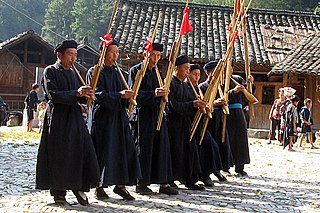
The lusheng is a Hmong musical instrument. It has a long history of 3000 years in China, traced back to the Tang Dynasty. It is a mouth organ with multiple bamboo pipes, each fitted with a free reed, which are fitted into a long blowing tube made of hardwood. It most often has five or six pipes of different pitches and is thus a polyphonic instrument. Its construction includes six parts. It comes in sizes ranging from very small to several meters in length.

The Pollard script, also known as Pollard Miao or Miao, is an abugida loosely based on the Latin alphabet and invented by Methodist missionary Sam Pollard. Pollard invented the script for use with A-Hmao, one of several Miao languages spoken in southeast Asia. The script underwent a series of revisions until 1936, when a translation of the New Testament was published using it.

The Hmong people are an ethnic group currently native to several countries, believed to have come from the Yangtze river basin area in southern China. The Hmong are known in China as the Miao, which encompasses not only Hmong, but also other related groups such as Hmu, Qo Xiong and A-Hmao. There is debate about usage of this term, especially amongst Hmong living in the West, as it is believed by some to be derogatory, although Hmong living in China still call themselves by this name. Throughout recorded history, the Hmong have remained identifiable as Hmong because they have maintained the Hmong language, customs, and ways of life while adopting the ways of the country in which they live. In the 1960s and 1970s, many Hmong were secretly recruited by the American CIA to fight against communism during the Vietnam War. After American armed forces pulled out of Vietnam the Pathet Lao, a communist regime, took over in Laos and ordered the prosecution and re-education of all those who had fought against its cause during the war. While many Hmong are still left in Laos, Thailand, Vietnam, Myanmar, and China, since 1975 many Hmong have fled Laos in fear of persecution. Housed in Thai refugee camps during the 1980s, many have resettled in countries such as the United States, French Guiana, Australia, France, Germany, as well as some who have chosen to stay in Thailand in hope of returning to their own land. In the United States, new generations of Hmong are gradually assimilating into American society while being taught Hmong culture and history by their elders. Many fear that as the older generations pass on, the knowledge of the Hmong among Hmong Americans will die as well.
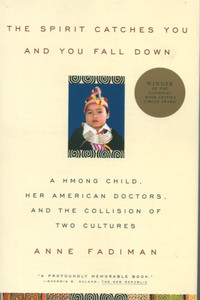
The Spirit Catches You and You Fall Down: A Hmong Child, Her American Doctors, and the Collision of Two Cultures is a 1997 book by Anne Fadiman that chronicles the struggles of a Hmong refugee family from Houaysouy, Sainyabuli Province, Laos, the Lees, and their interactions with the health care system in Merced, California. In 2005 Robert Entenmann of St. Olaf College wrote that the book is "certainly the most widely read book on the Hmong experience in America."
The Hmong People society originally from Thailand, Laos, Vietnam, and southeast China. As of 2011 the worldwide Hmong population is about four million. The Hmong culture is patrilineal, allowing a husband's family to make all major decisions, even when they solely concern the woman. However, the Hmong women have traditionally carried a large amount of responsibility and some power due to their necessary contribution of food and labor to the family.
The Hmong are a major ethnic group residing in Merced, California. As of 1997, Merced had a high concentration of Hmong residents relative to its population. The Hmong community settled in Merced after Dang Moua, a Hmong community leader, had promoted Merced to the Hmong communities scattered across the United States. As of 2010, there were 4,741 people of Hmong descent living in Merced, comprising 6% of Merced's population.
The Hin Heup massacre was the massacre of 14 Hmong civilians at Hin Heup bridge by Pathet Lao troops.
Mảng is an Austroasiatic language of Vietnam, China, and Laos. It is spoken mainly in Lai Châu Province, Vietnam and across the border in Jinping County, China. It was first documented only in 1974.

Nong Het, also Nong Haet, Nonghet, Muang Nonghet or Nonghed, is a market town in Xiangkhouang Province in northeastern Laos, located about 13 kilometres (8.1 mi) from the border with Vietnam. It is the principal town of Nong Het District. It is located along Route 7, 119 kilometres (74 mi) east of Phonsavan, along the road which passes through Muang Kham and Ban Na Sala on the way to Nong Haet. Bus companies operating in the area have increased to cater for tourists. The population is primarily Hmong peoples.

Kev Dab Kev Qhuas is the common ethnic religion of the Miao people, best translated as the "practice of spirituality". The religion is also called Hmongism by a Hmong American church established in 2012 to organize it among Hmong people in the United States.
Mark Edward Pfeifer is the editor of the Hmong Studies Journal, and the director of the Hmong Resource Center Library and the Museum at the Hmong Cultural Center in St. Paul, Minnesota.
Sonom was a chieftain of the rGyalrong people in China. He was the lord-lama of Greater Jinchuan. He was executed after his January 1776 defeat in the Jinchuan campaigns.
Histoire des Miao is a 1924 ethnographic book of the Hmong people by François Marie Savina, published by the Société des Missions-Etrangères de Paris. As of 2006, of Savina's writings, it is the most well-known and the most often cited. The book includes Savina's theories and views of the Hmong. Savina argued that the Hmong had non-Asian origins because their legends had similarities to European stories.
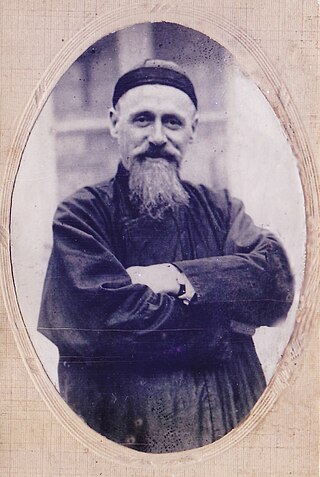
François Marie Savina was a Frenchman who worked as a Catholic priest and as an anthropologist. For an approximately forty-year period he worked in the Upper-Tonkin Vicariate, Hainan, and Laos. He studied the Hmong people of northern Vietnam and Laos as he was asked to spread Christianity to them. Nicholas Tapp, author of The Impossibility of Self: An Essay on the Hmong Diaspora, described Savina as "One of our earliest informants who is at all frank about the nature of his day-today encounters with the Hmong". Charles Keith, author of Catholic Vietnam: A Church from Empire to Nation, wrote that Savina was "[t]he most notable" missionary ethnographer of Southeast Asia of his era.

Ban Phou Pheung Noi is a Laotian village located at the peak of Phou Pheung mountain in the Xieng Khouang province of Laos. Phou Pheung mountain is approximately 916 m (3,005 ft). During the Vietnam War, combat between the American allies, the Hmong, and the Pathet Lao, The Laos Marxist government, and the Communist North Vietnamese People's Army took place on the mountain. Phou Pheung mountain runs from east to west and is rocky, and is covered in tropical forests. It is south of Muang Soui - Nongtang-Nato, and west of Phou Douk, Muang Phuan, Phonsavan and Plain of Jars. To the east, about 10 miles from Ban Phou Pheung Noi, is the Num Ngum 4 hydroelectric dam.
